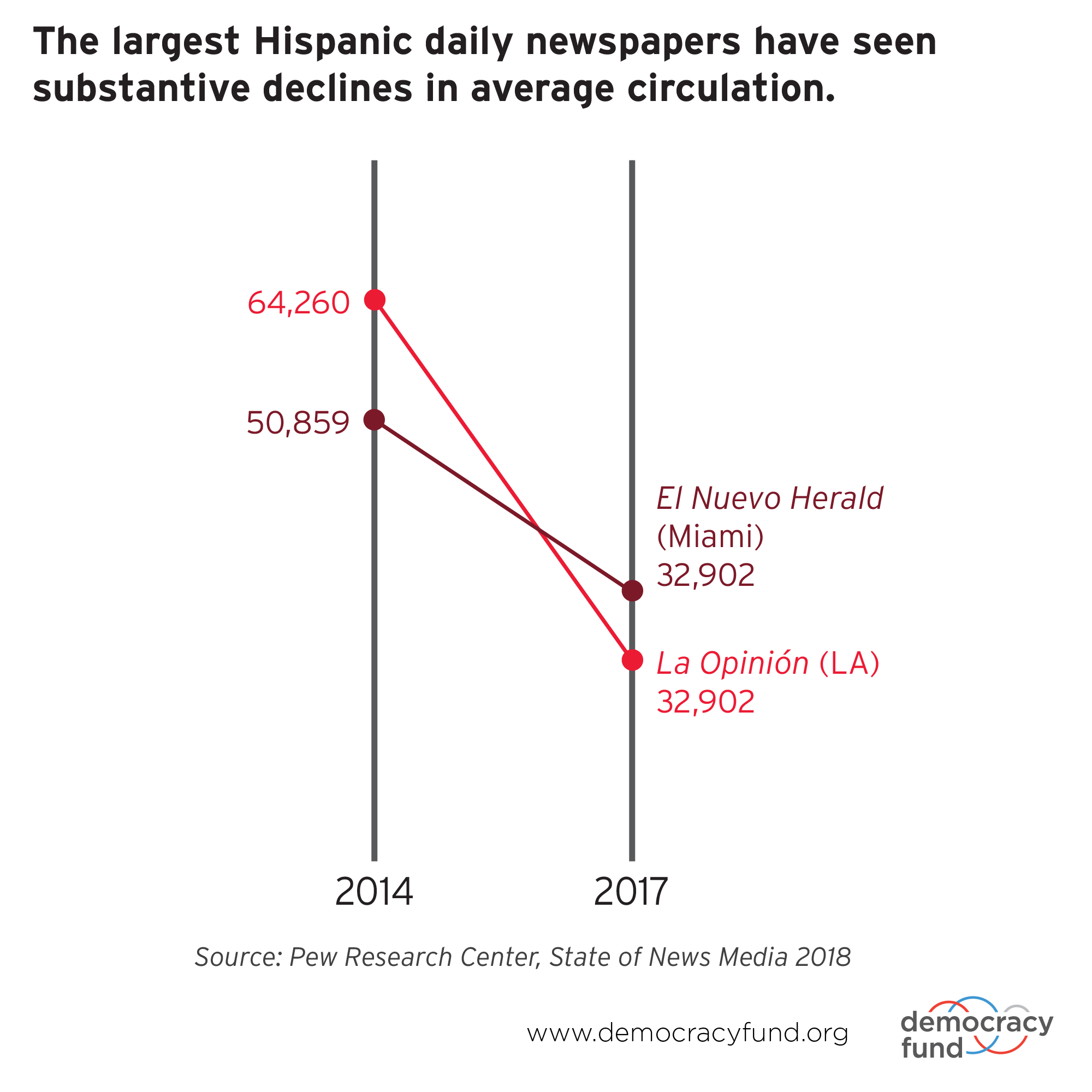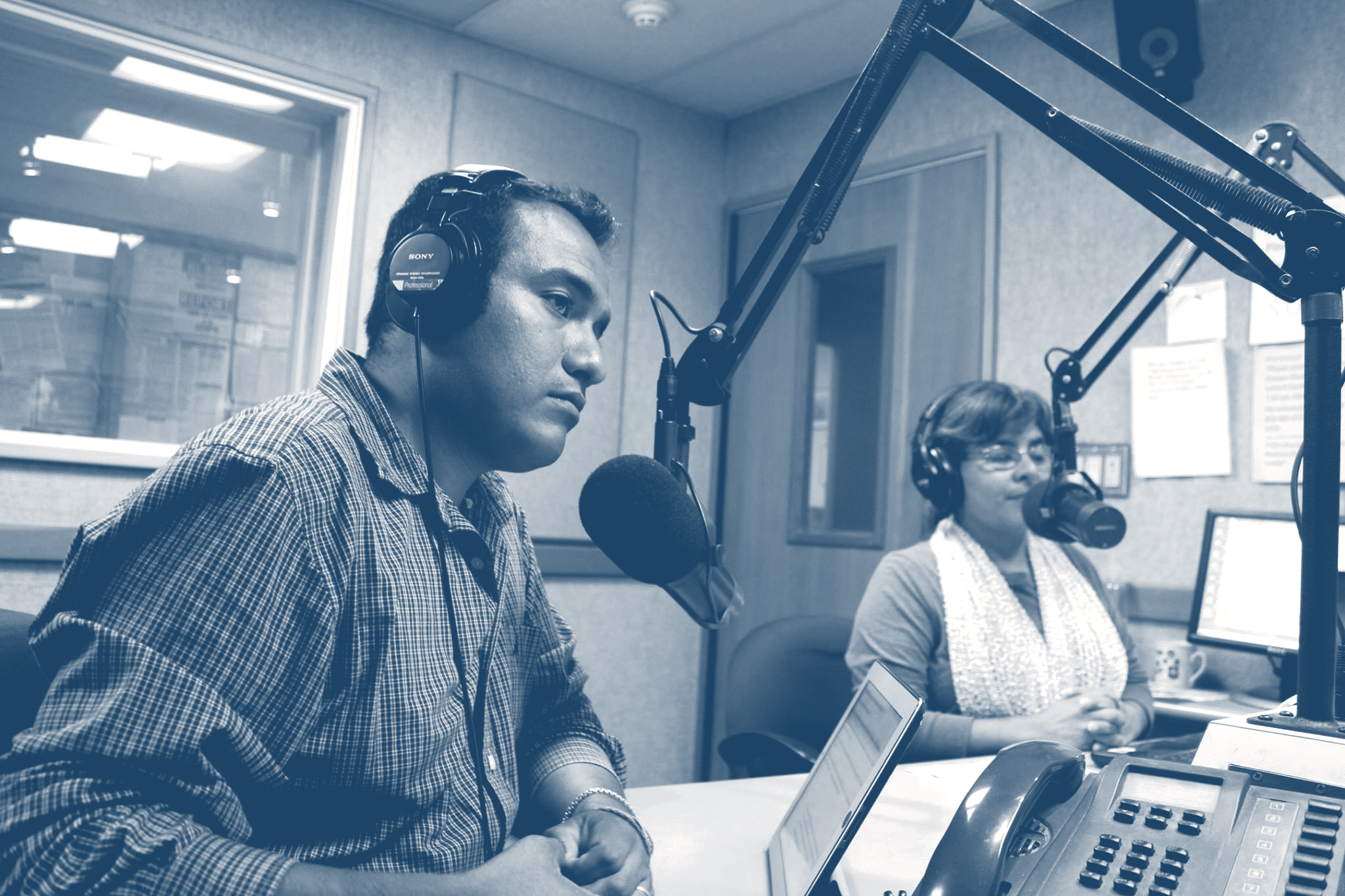Today we’re releasing Hispanic Media Today: Serving Bilingual and Bicultural Audiences in the Digital Age, a new report that explores the origins of Hispanic* media in the United States, its growth in recent decades, the complex nature of Latino media and its diverse audiences. The report is an exploration into the challenges and opportunities to sustain Hispanic media in the future.
As with other media sectors, Hispanic media is facing significant financial hurdles due to the virtual disappearance of traditional advertising. Following rapid growth in the 1990s and 2000s, Hispanic daily newspapers have seen more than a 10 percent decline in circulation over the past five years, consistent with other media sectors. On top of financial shortfalls, traditional Hispanic media has also grappled with adapting to the digital transformation and meeting the demands of an increasingly digital audience.
A survey by the National Association of Hispanic Journalists have found that 42 percent of Latinx journalists reported downsizing or cutbacks in staff hours at work, and more than 75 percent say they have been asked to do more with less resources. And 40 percent are concerned about job security.

In addition to financial challenges, Latino media also must take into account the complex diversity of the Hispanic population, which means that local audiences can differ from the shared history and culture of the Spanish-speaking outlet which serves that region. In spite of these struggles, Hispanic media has weathered the downturn better than many mainstream media because of its deep connection to community. And in the past decade, amidst a digital divide across language, age, and immigrant status, a number of bilingual and English-language digital media for younger Latinx audiences have emerged.
Spanish-language media in the U.S. has varied greatly in its more than 200 years of existence, and has served many roles. Publications have ranged from politically conservative to liberal, with varied readerships composed of exile, immigrant, or native Latinx communities. While disseminating local, regional, national and international news according to audience interests and needs, Hispanic media has also highlighted cultural and patriotic activities and served as a forum for public expression.
Hispanic media has also shaped and promoted social and political activism advocating for civil rights and defending Latinx communities against abuse from authorities. For example, Spanish-language radio programs in the early 1920s provided not only entertainment but also information and political advocacy. Spanish-language T.V. programming has also grown over the last 50 years, and provides information on issues of interest to Latinx communities, such as immigration, politics, health, education, and culture, as well as imported Latin American entertainment.

The story of Hispanic media in America is not a simple linear story and there are enormous opportunities to invest in this space and elevate the work of these journalists.
Philanthropic funders and investors should continue to provide critical operating resources to Spanish-language media and invest in helping them develop and design new revenue models. In addition to solidifying revenue, several recommendations to help grow Latino media became apparent during our research. For example, funders should also engage in initiatives to help the next generation of bilingual and bicultural journalism students when they enter the job market, as they make grants to keep Hispanic media afloat. An infusion of youth and fresh ideas into Hispanic media companies would help organizations become more sustainable.
Diversity of newsroom stories, staff, opinion, revenue and ownership is a crucial part of making sure the news reflects the communities it serves. We must do our part to uplift and better serve Hispanic media, to ensure that Americans have access to accurate, diverse sources of information that foster the full participation of every individual in our democracy.
It is our hope that the recommendations outlined in this report further support Hispanic media today, so that diverse, bicultural, bilingual stories can be told tomorrow.
*Hispanic and Latino are used interchangeably in this post by request of the author, as both pan-ethnic labels tend to be used throughout the United States.
Jessica Retis is an Associate Professor of Journalism at California State University Northridge, a current Democracy Fund grantee, and co-editor of the recently released book, The Handbook of Diasporas, Media, and Culture. To learn more about Jessica’s work, visit http://csun.academia.edu/JessicaRetis or follow @jretis.
